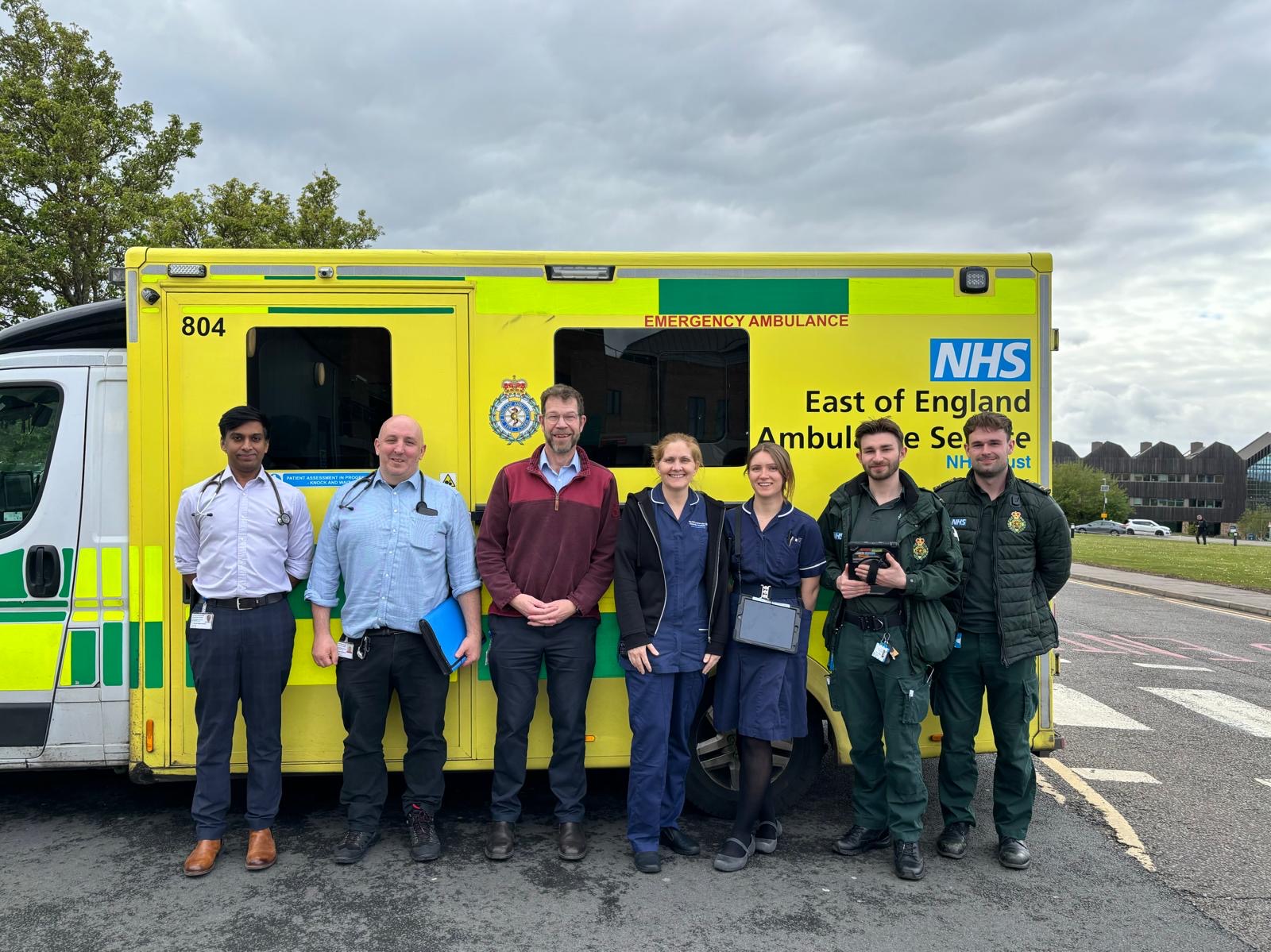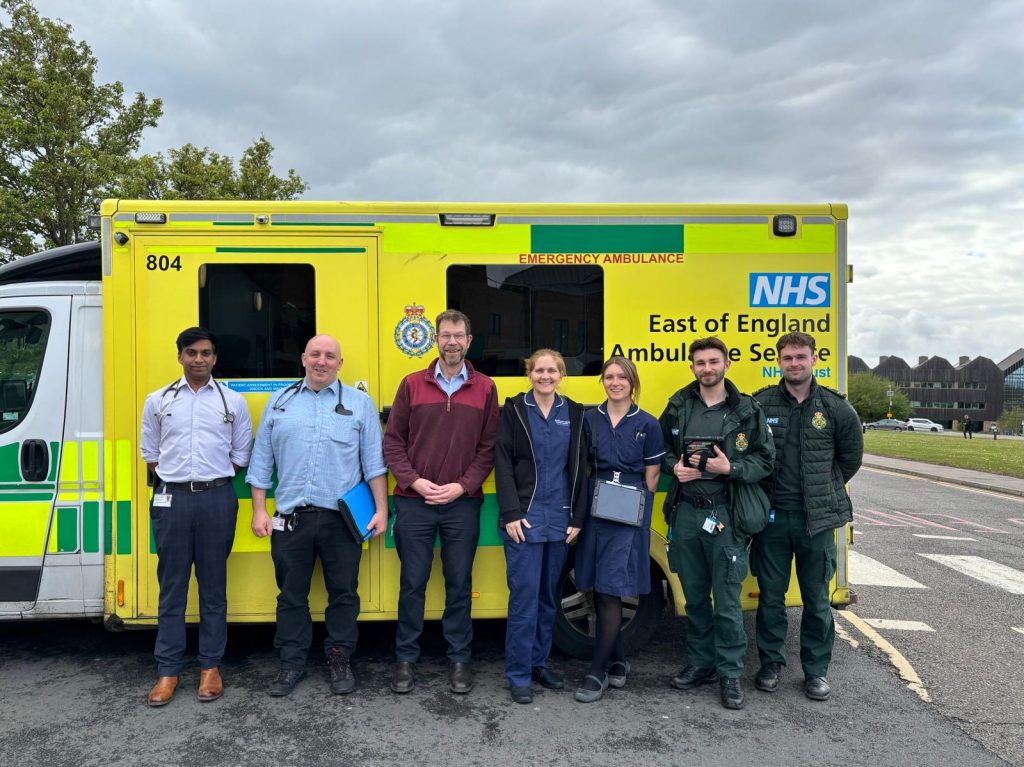New video assessments are being used for patients suspected of having a stroke in Norfolk to help them receive faster access to life saving treatment.
The Norfolk and Norwich University Hospital (NNUH) is working on a pilot with the East of England Ambulance Service NHS Trust (EEAST) where paramedics can video call a stroke consultant and lead nurse for a virtual assessment. The video assessment helps identify what type of scans, clot busting drugs or treatment may be needed. The NNUH team can then advise the crews where to take the patient so that they receive the specialist care as quickly as possible.
This can include rapid transfer to the hospital without the need to go to the hospital’s Emergency Department, redirection to the TIA clinic (for those suspected of having a mini stroke) or avoiding admission altogether.
After the video call the stroke specialists can request imaging and tests before the patient arrives at NNUH, providing prompt imaging, earlier treatment and improved patient outcomes.
Dr Kneale Metcalf, consultant stroke physician at NNUH, said: “This innovation is helping to provide patients with access to high level stroke care, wherever they are, ensuring they are then given the appropriate treatment and investigations as quickly as possible. We’re able to pre-alert our CT scanner so patients can be sent straight for a scan and onto the relevant ward. It is therefore also reducing unnecessary transfers to ED and the burden on the ambulance service. Bypassing ED appropriately is better for everyone. It is better for the wait times in ED and the volume of patients in ED that need to be seen.”
Dr Rayhaan Rahaman, Consultant Radiologist, added: “The treatment of stroke requires ambulance, stroke and radiology teams to act quickly in co-ordination with each other. Rapid diagnosis and treatment for stroke patients can prevent lifelong disability and we are excited that video assessments and artificial intelligence has the potential to help us achieve this goal.”
The pilot is running across the East of England region between EEAST and six other acute Trusts.
Brittany Wells, Clinical Lead for Stroke Video Triage at EEAST, said: “Stroke Video Triage is now live at nine sites across the East of England, and we are seeing some excellent results. With the ability to undertake a Direct to CT pathway we have seen a significant reduction in arrival to CT times for acute stroke patients, with an average of four minutes from ambulance arrival to imaging at established sites thanks to video triage. The video link between stroke specialists and ambulance crews allows for early triage which streamlines patient care. Feedback from patients has been very positive with patients feeling that their specialist care has begun before they have even left their home.”
The pilot comes after an AI system has been put in place at NNUH to help assess stroke imaging.
Dr Metcalf added: “Our patients have three main scans to assess how much damage has been caused by a stroke. The artificial intelligence system called BRAINOMIX looks at those scans and can create outline results within seconds. The images and results can be accessed on a mobile app or on a web-based system and can help aid clinical decision making. The images are reviewed by the stroke and radiology team, but it is the speed and the reporting of the images that is very useful.
Dr Bernard Brett, Interim Medical Director, said: “I am delighted to see the innovations that our stroke team, working in collaboration with system partners, are introducing to improve the care and deliver better outcomes for patients presenting with a stroke. We want the best treatments for patients and this is a fantastic example of how using novel approaches can make a real difference. Well done to all the team.”



